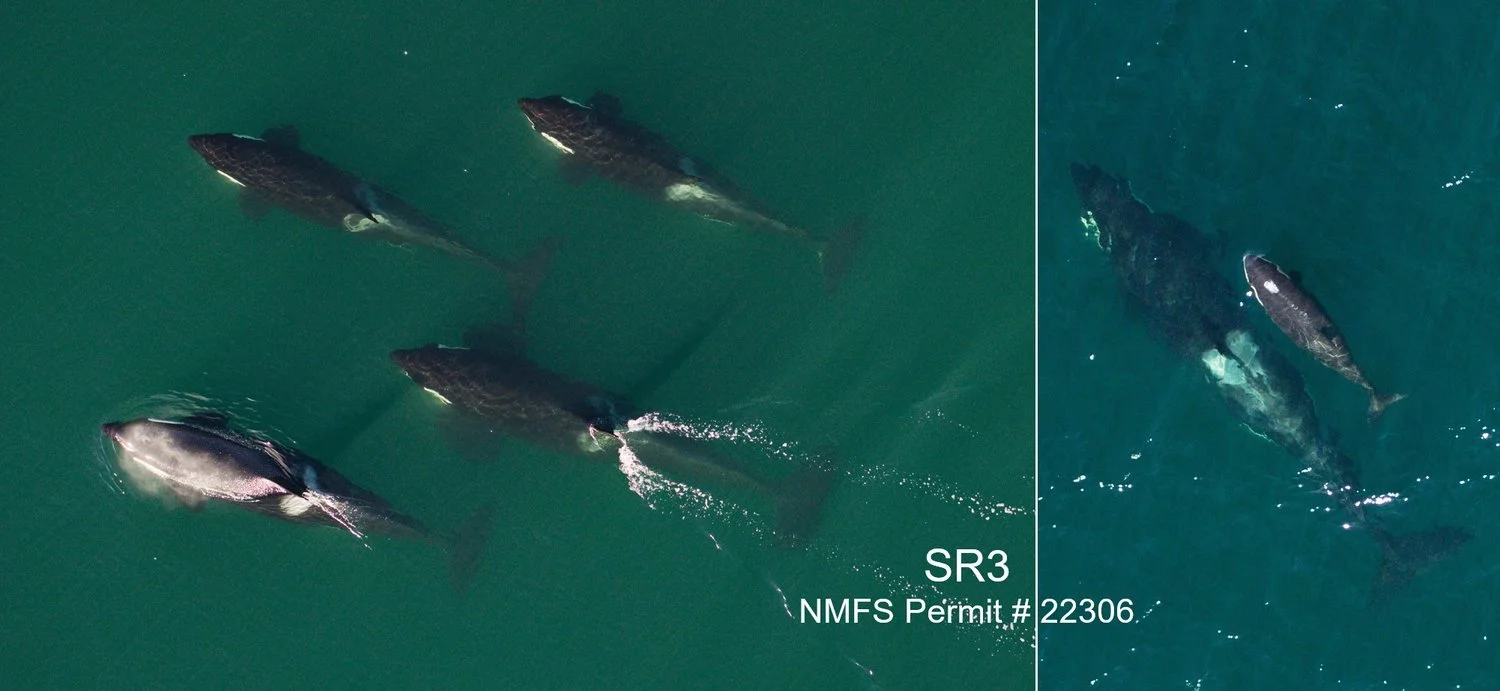Updating Condition Assessments for Vulnerable Killer Whales
Since the turn of the year, SR³’s Dr. Holly Fearnbach and Dr. John Durban have had several encounters with endangered Southern Resident killer whales (SRKWs), most recently in April. Using their remotely controlled octocopter drone, they have been able to collect aerial images of all members (n=25) of J pod, including the new calf J59, and 23/33 members of L pod. These aerial images are currently being measured to provide quantitative data on their body condition during winter and spring, allowing the team to monitor changes across seasons and years. These data will be provided to state and federal managers in both the US and Canada to help inform adaptive conservation measures, which could include seasonal changes in vessel regulations if whales are found to be in vulnerable condition.
Holly and John will spend the next two weeks off the Kenai Fjords in Alaska, joining Dan Olsen from the North Gulf Oceanic Society for a second year of aerial photogrammetry research on fish-eating Alaska Resident killer whales (ARKWs). The team will collect aerial images of ARKWs to estimate the size and body condition of this abundant and increasing population as a comparison to the small and declining population of SRKWs.
Aerial image of the J16 matriline in January 2022 (left) and J37 and her new calf J59 in April 2022 (right). Newborn calves are approximately 1/3 of the length of their mother at birth. These images were collected using a remotely controlled octocopter drone that was flown non-invasively >100ft above the whales under NMFS Research Permit # 22306.

